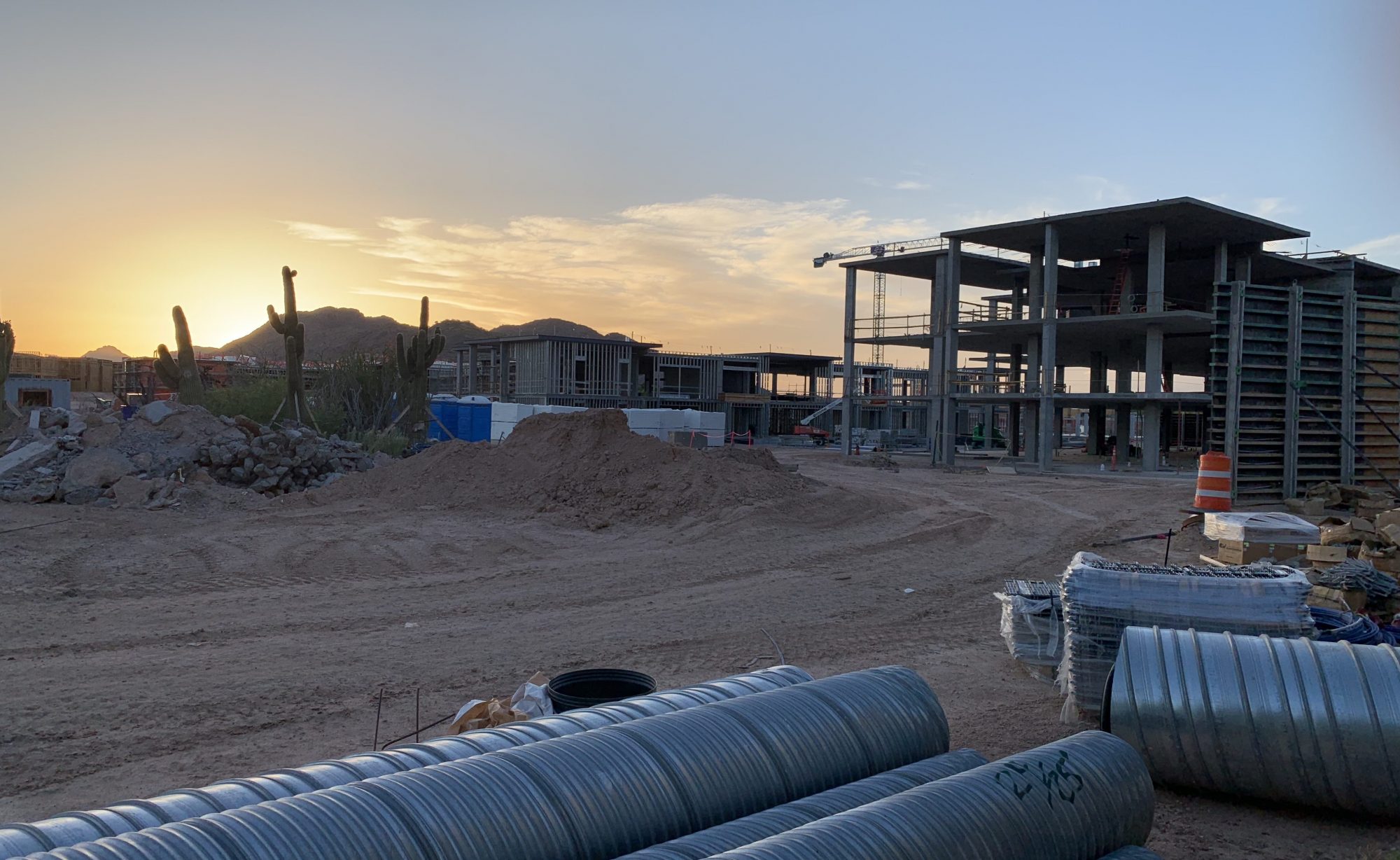
Who is responsible for payment of a workers’ compensation claim arising from framing work that has been subcontracted at least 4 times on a residential construction project? That is the question that Division One of the Arizona Court of Appeals recently tackled in Meno’s Construction, LLC v. Industrial Commission of Arizona, No. 1 CA-IC 18-0041 and 1 CA-IC 18-0042 (Consolidated). The Court ultimately set aside the Industrial Commission of Arizona’s underlying decision that only two of the relevant subcontractors were responsible. In doing so, the Court held that the administrative law judge (the “ALJ”) below “did not evaluate the liability of each contractor and subcontractor made party to [the] workers’ compensation claim,” in violation of the “umbrella of liability” concept for statutory employers contemplated by Arizona’s Workers’ Compensation Act.
Background
Meno’s Construction arises out of injuries sustained by Victor Reyes (“Reyes”) while performing framing work on Lot 31 of a Taylor Morrison housing development in Gilbert, Arizona. Reyes injured both his hip and wrist after falling from a ladder. While this may seem rather straightforward, the circumstances by which Reyes wound up working on the project are considerably more circuitous. Reyes’ route to Lot 31 can be summarized as follows:
- Taylor Morrison contracted with Younger Brothers Group, LLC (“YB”) to complete the framing on various new home construction projects in and around Phoenx, including Lot 31;
- YB subcontracted the Lot 31 framing work to Genaro’s Framing Construction, LLC (“GFC”);
- GFC, in turn, subcontracted the work to Meno’s Construction, LLC (“MC”);
- MC then subcontracted the work to Juan Estopellan (“Estopellan”), a YB foreman, who ultimately directed and supervised the framing;
- Nevertheless, Estopellan hired Roberto Navarro (“Navarro”) to provide day-to-day oversight for the work; and
- While Reyes had worked with both Estopellan and Navarro for several months, Navarro paid Reyes weekly via cash or personal check and told him when and where to work.
After Reyes sustained his injuries, Navarro promptly notified Estopellan of the same. Estopellan then notified MC and directed Reyes to a clinic of MC’s choice. Reyes, however, reported his injuries to the Industrial Commission, which resulted in consolidated claims against the following five potential employers and their insurers: Navarro, Estopellan, MC, GFC, and YB. Because Estopellan and Navarro did not have workers’ compensation insurance, the Special Fund Division/No Insurance Section (the “Fund”) was also made a party.
After a hearing, the Industrial Commission issued a decision accepting the ALJ’s findings that: (1) Estopellan had employed both Navarro and Reyes to work on Lot 31; and (2) MC maintained control over the project. Accordingly, the ALJ concluded that Estopellan was Reyes’ direct employer, MC was his statutory employer, and both were responsible for his workers’ compensation claim. The ALJ did not, however, make any findings concerning GFC or YB. The Industrial Commission’s decision was affirmed in the Superior Court, and both the Fund and MC appealed.
Analysis
On appeal, the Fund argued that Estopellan was not an employer subject to Arizona’s Workers’ Compensation Act because he did not: (1) have a “hiring plan;” or (2) “own and operate a complex framing company.” But the Arizona Court of Appeals quickly rejected this argument, noting that the Act “does not require a formal hiring process or complex operations.” Instead, the Court noted that, employers are subject to the Act so long as they employ at least one employee in the regular course of business. Here, the ALJ had determined that “Estopellan was operating a side business known as Juan Estopellan Construction, which included framing…and that he hired…Navarro to run the job site, to hire men to perform the work, and to oversee the work being performed. ” The Court of Appeals concluded that this finding was supported by the record, and signified that Estopellan employed at least one employ in the regular course of his business. Consequently, the Court affirmed the factual findings and conclusions of the ALJ with respect to Estopellan’s liability.
MC and the Fund also argued on appeal that the Industrial Commission’s decision was incorrect because it failed to consider whether YB and GFC were jointly and severally liable for Reyes’ claim as statutory employers pursuant to A.R.S. § 23-902(B). Stated differently, the Court of Appeals was tasked with determining whether an employee could have multiple statutory employers under the Workers’ Compensation Act.
Generally speaking, A.R.S. § 23-902(B) extends an employer’s liability for industrial accidents to those involving their “contractor[] and the contractor’s employees, and any subcontractor and the subcontractor’s employees,” if the work being accomplished would ordinarily be done by the employer’s employees. Here, the Court of Appeals noted that the Workers’ Compensation Act defines statutory employers with regard to the “nature of the work procured and the level of supervision or control retained over the work…and does not limit the classification to a single link in the chain of contractors and subcontractors.” As a result, the Court held that the Act: (1) “explicitly contemplates an umbrella of liability under the statutory employer;” and (2) “requires ALJ’s to evaluate the liability of each contractor or subcontractor made a party to a workers’ compensation claim under A.R.S. § 23-902(B).” Accordingly, because the ALJ did not evaluate the potential liability of YB or GFC here as potential additional statutory employers, the Court of Appeals set aside the Industrial Commission’s underlying decision.
Conclusion
Given the number of subcontractors involved, Meno’s Construction is a good example of the potentially far reaching net cast by the statutory employer provision of A.R.S. § 23-902(B). Indeed, the important takeaways from Meno’s Construction are that: (1) injured workers can have more than one statutory employer under Arizona’s Workers’ Compensation Act; and (2) in actions before the Industrial Commission, ALJ’s must evaluate the liability of each contractor and subcontractor made party to a workers’ compensation claim.
